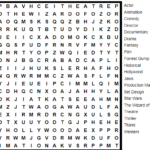 When is the last time you danced the night away? If it’s been a while, you may want to get back in the groove. Dancing is not just mindless movement; it’s been shown to actually boost brain health.
When is the last time you danced the night away? If it’s been a while, you may want to get back in the groove. Dancing is not just mindless movement; it’s been shown to actually boost brain health.
In a recent study sponsored by the University of Illinois at Urbana-Champaign, a group of adults between ages 60 and 80 who learned to dance by attending classes regularly for six months showed improvement in an area of the brain called the fornix. They showed more improvement than the other groups in the study who walked or did balancing and stretching exercises for the same amount of time.
The fornix – a C-shaped bundle of nerve fibers in the base of the brain – is important in memory and in the processing speed of the brain. A damaged fornix can cause memory loss and advance a person’s condition from mild cognitive impairment to clinical Alzheimer’s disease.
Many studies have shown a link between dancing and better brain health. As early as 2003, a study in the New England Journal of Medicine by the Albert Einstein College of Medicine found that of 11 different types of physical activity that included swimming, tennis, biking and golf, dancing was the only activity that lowered the risk for dementia.
Why Dancing?
As a physical, mental and emotional activity, dancing stimulates several areas of the brain.
Exercise has already been proven to improve brain health. The mental challenge in learning new dance steps, the social stimulation from dancing with friends or a partner, and the emotional stimulation brought on by music all play a role in brain health as well.
For more information and tips on exercises for better brain health, visit healthybrains.org/pillar-physical.
Sources:
- http://journal.frontiersin.org/article/10.3389/fnagi.2017.00059/full
- https://www.psychologytoday.com/blog/the-athletes-way/201310/why-is-dancing-so-good-your-brain
- http://neuro.hms.harvard.edu/harvard-mahoney-neuroscience-institute/brain-newsletter/and-brain-series/dancing-and-brain
- https://www.nytimes.com/2017/03/29/well/walk-stretch-or-dance-dancing-may-be-best-for-the-brain.html









